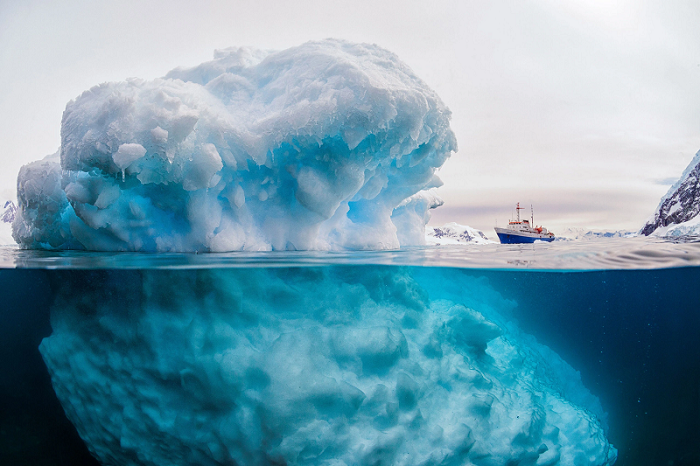This article provides a comprehensive overview of the marine environment and is intended for maritime professionals, marine officers, students, and individuals interested in environmental issues related to ship pollution and compliance with regulations. By covering essential topics such as oceanographic features, marine ecosystems, pollution, and regulations, this one-hour course will equip students with a solid foundation for understanding the marine environment and its implications for their future careers.
Welcome to the Introduction to Marine Environment for Ship Marine Engineers and Navigation Students course. This one-hour course is designed to provide you with a comprehensive understanding of the marine environment and its implications for your future careers. The course is structured into seven main sections, each focusing on a specific aspect of the marine environment. By the end of this course, you will have gained essential knowledge and skills related to the marine environment and its relationship with shipping and marine operations.
Importance of Understanding the Marine Environment for Ship Marine Engineers and Navigation Students
The marine environment plays a critical role in the daily activities of ship marine engineers and navigation students. Understanding the complexities and dynamics of the marine environment is essential for the following reasons:
- Safe navigation: Knowledge of oceanographic features, such as currents and tides, enables navigation students to plan efficient routes and avoid potential hazards.
- Weather forecasting: Understanding marine weather and climate helps mariners to predict and prepare for adverse conditions, ensuring the safety of the vessel and crew.
- Environmental stewardship: Ship marine engineers and navigators play a crucial role in protecting marine ecosystems and biodiversity by following best practices, regulations, and implementing effective environmental management systems.
- Pollution prevention and control: Familiarity with sources of marine pollution and their impacts enables marine professionals to adopt measures to minimize pollution and adhere to relevant regulations.
- Compliance with regulations: Knowledge of international maritime regulations and their implications for shipping operations ensures that marine professionals can effectively maintain compliance and contribute to sustainable shipping practices.
Understanding the marine environment is essential for ship marine engineers and navigation students, as it directly affects the safety, efficiency, and sustainability of their work. This course aims to provide a solid foundation for your future careers and help you become responsible stewards of the marine environment.
Oceanographic Features
Oceans and Seas: Distribution and Characteristics
The Earth’s surface is composed of about 71% water, with five major oceans: the Pacific, Atlantic, Indian, Southern, and Arctic oceans. These oceans are further divided into various seas and gulfs, each with unique characteristics. Understanding the distribution and properties of oceans and seas is crucial for marine engineers and navigation students, as it influences ship design, route planning, and operational considerations.
- Pacific Ocean: The largest and deepest ocean, the Pacific covers more than 60 million square miles and contains the Mariana Trench, the world’s deepest point.
- Atlantic Ocean: The second-largest ocean, the Atlantic is home to the Gulf Stream, a powerful ocean current that greatly affects weather and shipping routes.
- Indian Ocean: This ocean is the third-largest and is characterized by its warm waters, monsoon winds, and significant shipping traffic.
- Southern Ocean: Also known as the Antarctic Ocean, this ocean surrounds the continent of Antarctica and is known for its extreme weather conditions and icy waters.
- Arctic Ocean: The smallest and shallowest ocean, the Arctic Ocean is ice-covered for much of the year, posing unique challenges for shipping and marine operations.
Currents: Types, Causes, and Effects on Navigation
Ocean currents are the continuous movement of seawater in a particular direction, driven by factors such as wind, temperature, and salinity differences. Understanding ocean currents is essential for navigation students, as they can significantly affect ship speed, fuel consumption, and route planning. There are two main types of currents: surface currents and deep-water currents.
Surface currents: These currents are driven primarily by wind and make up about 10% of ocean water. They can be warm or cold and can influence local climates and weather patterns. The Gulf Stream, for example, is a warm surface current that has a significant impact on the weather and shipping routes in the North Atlantic.
Deep-water currents: These currents are driven by differences in water density due to temperature and salinity variations. They make up the remaining 90% of ocean water and play a vital role in the global climate system.
Tides: Causes, Types, and Impact on Marine Operations
Tides are the periodic rise and fall of sea levels caused by the gravitational pull of the Moon and, to a lesser extent, the Sun. Understanding tides is crucial for navigation students and marine engineers, as they can affect ship operations, port activities, and coastal navigation. There are three main types of tides:
- Diurnal tides: These tides consist of one high tide and one low tide per day.
- Semidiurnal tides: These tides have two high tides and two low tides of roughly equal height each day.
- Mixed tides: These tides have varying high and low tide levels throughout the day, with the difference in height changing over time.
Tides impact marine operations by influencing water depth, tidal currents, and the accessibility of ports and harbors. Accurate tide predictions are essential for safe navigation, efficient cargo handling, and avoiding groundings or collisions.
Marine Weather and Climate
Weather Systems: Pressure Systems, Wind Patterns, and Their Effects on the Marine Environment
Marine weather plays a significant role in the safety and efficiency of shipping operations. Understanding various weather systems and their impact on the marine environment is essential for marine engineers and navigation students. Key weather systems include:
Pressure systems: High and low-pressure systems are created by the Earth’s atmospheric circulation. High-pressure systems are associated with calm weather, while low-pressure systems can bring storms and strong winds.
Wind patterns: Wind is caused by the difference in atmospheric pressure and is influenced by factors such as the Earth’s rotation (Coriolis effect) and geographical features. Predominant wind patterns include trade winds, westerlies, and polar easterlies.
Oceanographic effects: Weather systems can also affect oceanographic features such as currents, waves, and sea surface temperatures, which in turn impact marine operations.
Climate Zones: Tropical, Temperate, and Polar Regions
The Earth’s climate can be divided into three main zones, each with distinct weather patterns and challenges for marine operations:
Tropical zone: Located near the equator, the tropical zone experiences warm temperatures, high humidity, and frequent thunderstorms. Tropical cyclones, also known as hurricanes or typhoons, can pose significant risks to shipping in this region.
Temperate zone: Situated between the tropics and the polar regions, the temperate zone experiences moderate temperatures and distinct seasonal changes. Weather patterns in this zone include mid-latitude cyclones, which can bring heavy precipitation and strong winds.
Polar zone: Encompassing the areas around the North and South Poles, the polar regions are characterized by cold temperatures, ice-covered waters, and extreme weather conditions. Sea ice and icebergs pose unique navigational challenges for ships operating in these regions.
Weather Forecasting Tools and Resources for Mariners
Accurate and timely weather information is crucial for marine professionals to ensure safe and efficient operations. Various tools and resources are available for mariners to obtain weather forecasts and updates:
- Satellite imagery: Satellites provide valuable information on cloud cover, storm systems, and sea surface temperatures, which can help mariners anticipate changing weather conditions.
- Weather models: Advanced computer models can simulate and predict weather patterns, helping mariners make informed decisions on route planning and vessel operations.
- Meteorological organizations: National and international meteorological organizations, such as the National Oceanic and Atmospheric Administration (NOAA) and the World Meteorological Organization (WMO), provide marine weather forecasts and warnings.
- Shipboard weather equipment: Modern ships are equipped with sophisticated weather monitoring and forecasting tools, including weather radars, satellite communication systems, and onboard weather stations.
By staying informed about marine weather and climate, marine engineers and navigation students can better understand the challenges and risks they may face during their careers and make informed decisions to ensure safe and efficient operations.
Marine Ecosystems
A Coastal Ecosystems: Estuaries, Mangroves, and Coral Reefs
Coastal ecosystems are vital to the health of the marine environment, as they provide essential habitats for a wide range of marine species, support biodiversity, and protect coastlines from erosion.
- Estuaries: Estuaries are where rivers meet the sea, and they are characterized by a mix of fresh and saltwater. These nutrient-rich environments support a diverse array of species, including fish, birds, and invertebrates. Estuaries also serve as critical nursery grounds for many commercially important fish species.
- Mangroves: Mangrove forests are found along tropical and subtropical coastlines and are characterized by their unique trees and shrubs that can tolerate saltwater. Mangroves provide vital habitats for fish, crustaceans, and birds, and they also protect coastlines from erosion and storm surges.
- Coral reefs: Coral reefs are formed by colonies of coral polyps and are found in warm, shallow waters. They are among the most diverse and productive ecosystems on Earth, supporting thousands of species of fish, invertebrates, and other marine life.
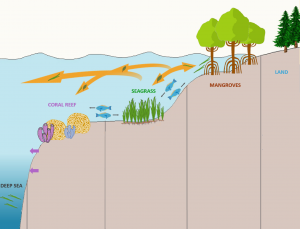
Open Ocean Ecosystems: Pelagic and Deep-Sea Environments
The open ocean, or pelagic zone, is the largest marine ecosystem and covers over 70% of the Earth’s surface. It can be further divided into different zones based on depth:
- Epipelagic zone (0-200 meters): This sunlit zone supports the highest concentration of marine life, including phytoplankton, which forms the base of the marine food web. Many fish, marine mammals, and sea turtles inhabit this zone.
- Mesopelagic zone (200-1,000 meters): Also known as the twilight zone, this region is characterized by decreasing light and temperature. Unique species such as bioluminescent organisms and deep-sea predators can be found here.
- Bathypelagic and abyssopelagic zones (1,000-6,000 meters): These deep-sea environments are characterized by extreme pressure, darkness, and cold temperatures. Life here is adapted to these harsh conditions, and many species are still being discovered.
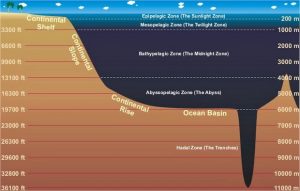
Importance of Biodiversity and the Role of Marine Engineers and Navigators in Conservation Efforts
Biodiversity is crucial for the health and resilience of marine ecosystems. It provides essential ecosystem services, such as food production, climate regulation, and nutrient cycling. Marine engineers and navigators play a vital role in preserving biodiversity by:
- Minimizing the environmental impact of shipping operations: Implementing best practices, such as reducing pollution and managing ballast water, can help protect marine ecosystems from harm.
- Supporting sustainable fishing practices: By designing and implementing more selective fishing gear and promoting responsible fishing practices, marine engineers can help reduce overfishing and protect vulnerable species.
- Participating in research and monitoring efforts: Marine professionals can contribute to our understanding of marine ecosystems by participating in data collection, research projects, and environmental monitoring programs.
By understanding the importance of marine ecosystems and the role they play in supporting biodiversity, marine engineers and navigation students can contribute to conservation efforts and help ensure the health and sustainability of the marine environment.
Marine Pollution and Environmental Challenges
Sources of Marine Pollution: Land-based and Ship-generated
Marine pollution is a significant threat to the health of the oceans and marine ecosystems. The main sources of pollution can be classified into two categories:
- Land-based pollution: This type of pollution originates from activities on land and is carried to the oceans via rivers, runoff, and atmospheric deposition. Key sources include: a. Agricultural runoff: Fertilizers, pesticides, and other chemicals used in agriculture can enter waterways and eventually reach the ocean, leading to issues such as eutrophication and harmful algal blooms. b. Industrial and municipal waste: Discharge from factories, sewage treatment plants, and stormwater systems can introduce pollutants, including heavy metals, chemicals, and untreated sewage, into the marine environment. c. Litter and plastic waste: Plastic debris and other litter can accumulate in the ocean, posing threats to marine life through ingestion, entanglement, and habitat degradation.
- Ship-generated pollution: Pollution from shipping operations includes: a. Oil spills: Accidental or intentional discharge of oil from ships can have severe environmental consequences, impacting marine life, coastal habitats, and local economies. b. Air emissions: Ships emit greenhouse gases (e.g., carbon dioxide) and air pollutants (e.g., sulfur oxides, nitrogen oxides) that contribute to climate change and air quality issues. c. Ballast water discharge: The release of ballast water from ships can introduce invasive species into new environments, disrupting local ecosystems and causing significant economic damage.
Impacts of Pollution on Marine Life and Human Activities
Marine pollution has wide-ranging effects on marine life, human health, and the economy. Some of these impacts include:
- Harm to marine species: Pollution can cause direct harm to marine organisms through ingestion, entanglement, or toxic exposure, leading to injury, illness, or death.
- Disruption of food webs: Pollutants can accumulate in the food chain, affecting the health of predators and the overall stability of marine ecosystems.
- Degradation of habitats: Pollution can damage or destroy essential habitats, such as coral reefs and seagrass meadows, impacting the species that rely on them.
- Human health risks: Contaminated seafood can pose health risks to humans, while pollution-related closures of fisheries and beaches can negatively affect local economies.
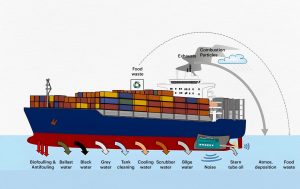
Regulations and Best Practices for Pollution Prevention and Control
There are numerous international, regional, and national regulations in place to address marine pollution. Some key measures include:
- International Maritime Organization (IMO) regulations: The IMO has established several conventions and protocols to address different aspects of marine pollution, such as the International Convention for the Prevention of Pollution from Ships (MARPOL) and the Ballast Water Management Convention.
- National and regional regulations: Many countries and regions have enacted their own laws and regulations to address marine pollution, often in accordance with international agreements.
- Best practices: Ship operators, marine engineers, and navigators can implement best practices to minimize their environmental impact. Examples include proper waste management, regular equipment maintenance, and the use of environmentally friendly technologies and fuels.
By understanding the sources, impacts, and regulations related to marine pollution, marine engineers and navigation students can contribute to efforts aimed at protecting the marine environment and ensuring the sustainability of maritime activities.
Navigational Hazards and Safety
Icebergs, sea ice, and their impact on navigation and ship engineering are significant concerns in certain regions. Formed through natural processes in colder areas, these ice formations create collision risks and necessitate careful route planning. Ship engineering must take these hazards into account, incorporating ice-strengthened hulls and propulsion systems for added protection. Organizations such as the International Ice Patrol provide essential iceberg tracking resources to mitigate these risks.
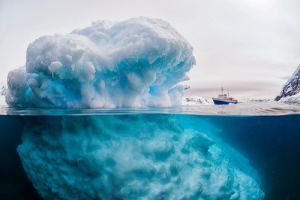
Submerged and floating objects, both natural (e.g., logs, rocks) and man-made (e.g., containers, shipwrecks), pose challenges to ships and marine operations. Detection methods, including radar, sonar, and visual observation, help identify these hazards. Avoidance strategies such as route planning, speed adjustments, and the use of maritime charts contribute to safer navigation. Additionally, reporting and sharing information about submerged and floating objects with other vessels and relevant authorities are vital.
Meteorological hazards, such as storms (e.g., hurricanes, cyclones), fog, and extreme weather events (e.g., squalls, rogue waves), can significantly impact ship navigation and marine operations. Weather forecasting and monitoring tools like satellite imagery, meteorological charts, and onboard instruments help mariners stay informed about potential hazards. To mitigate the effects of meteorological hazards, strategies include route planning, speed adjustments, and crew preparedness. Clear communication and coordination among ships, coastal authorities, and meteorological agencies play a crucial role in ensuring safe navigation in challenging conditions.
Marine Environmental Regulations and Compliance
International maritime regulations: MARPOL, SOLAS, and the IMO
- MARPOL (International Convention for the Prevention of Pollution from Ships): key annexes, requirements, and prevention measures for various types of pollution
- SOLAS (International Convention for the Safety of Life at Sea): key provisions related to environmental protection and safety
- Other relevant conventions and agreements: Ballast Water Management Convention, Anti-fouling Systems Convention, and the Hong Kong Convention on Ship Recycling
Shipboard environmental management systems
Shipboard environmental management systems (EMS) serve as structured frameworks that enable organizations to manage and minimize the environmental impacts of their operations. These systems help shipping companies and crew members adhere to international and national environmental regulations while implementing best practices to reduce pollution and minimize harm to the marine environment. An effective EMS encompasses various key components, such as environmental policy, objectives, targets, monitoring, and reporting. The proper implementation of a shipboard EMS involves assigning clear roles and responsibilities among crew members, with senior officers leading the charge in promoting a culture of environmental responsibility. This process includes comprehensive training and documentation to ensure that all crew members understand and follow the necessary procedures. One of the main benefits of an EMS is the improvement of a ship’s environmental performance, which translates to regulatory compliance and potential cost savings. International standards and guidelines, such as ISO 14001 and the International Maritime Organization’s (IMO) Guidelines for the Development of a Shipboard Marine Pollution Emergency Plan, provide a solid foundation for developing and maintaining a robust EMS on board.
Role of marine engineers and navigators in ensuring compliance
- Responsibilities of marine engineers: monitoring and maintaining ship systems to prevent pollution, handling and disposal of waste, and implementing pollution control technologies
- Responsibilities of navigators: route planning to avoid environmentally sensitive areas, adherence to speed limits in specific areas, and monitoring weather conditions to minimize environmental impacts
- Collaboration between marine engineers and navigators to ensure compliance with environmental regulations
- Reporting and record-keeping requirements: maintaining logbooks, documenting incidents, and reporting to relevant authorities
- Importance of continuous training, awareness, and professional development in staying up-to-date with evolving regulations and best practices
In conclusion, this course has provided a comprehensive overview of the marine environment and its significance for ship marine engineers and navigation students. We have covered essential topics such as oceanographic features, marine weather and climate, marine ecosystems, marine pollution and environmental challenges, navigational hazards and safety, and marine environmental regulations and compliance.
Understanding the marine environment is crucial for the future of shipping and marine operations, as it directly impacts the safety, efficiency, and sustainability of maritime activities. Marine professionals play a vital role in preserving the health of our oceans and the life that depends on them by adhering to international regulations and adopting best practices. As the marine environment continues to evolve and face new challenges, it is crucial for marine engineers, navigators, and other maritime professionals to stay up-to-date on the latest developments and advancements in marine environmental protection. This course serves as a stepping stone in fostering an ongoing commitment to learning and staying informed about marine environmental issues, ensuring a sustainable and prosperous future for the shipping industry and the global community that relies on it.
By Reza Karimpour.

